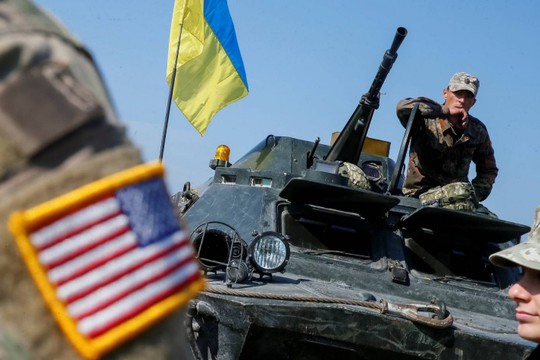Photo: Al Jazeera
Under US guidance, Ukraine is planning a major counteroffensive likely later this spring when the fields and secondary roads that are not asphalted dry out. Right now most military vehicles cannot operate over open fields and have real difficulty on unpaved secondary roads, “Asia Times” notes.
According to the leaked documents, Ukraine can expect big gains from its offensive. But it would seem the reality is quite different.
Indeed, the documents themselves tell a different story, which helps explain the mad dash by the Biden administration to try and stop the dissemination of the leaked documents.
The planned Ukrainian late Spring offensive could be a death trap for the US, NATO and even America’s Asian allies.
The offensive is largely the brainchild of US Under Secretary of State for Political Affairs Victoria Nuland. She is the éminence grise in the Biden administration when it comes to Ukraine. She has a long history with Ukraine. In the Obama administration, she supported the Maidan protestors and the overthrow of the legally elected, but pro-Russia, government of Ukraine. There are secret recordings of her conversations with the US ambassador to Ukraine at the time, deciding who would be best to replace Viktor Yanukovych, who was then president of Ukraine.
The US backed the coup in Ukraine, even though it was illegal and undemocratic. Since then most of the Russian-speaking parts of Ukraine have not participated in Ukrainian elections, including Zelensky’s election in 2019.
The planned counteroffensive, despite US and NATO support, faces some significant obstacles. The nine US-NATO-equipped brigades have less armor than promised by NATO.
The Pentagon papers also tell us that Ukraine’s air defenses are very badly depleted, either destroyed by the Russians or lacking ammunition. Even interceptors for the US Patriot air defense system delivered to Ukraine are currently unavailable unless replacement missiles are yanked from US and European operational units.
What this means is that the Russians have an advantage in air superiority which, in any offensive, they will use against the Ukrainian forces. The lack of ammunition is also a major problem to support the promised offensive, even to continue the war itself.
However, the large number of forces bottled up in Bakhmut (10,000 to 15,000) and elsewhere (Avdiivka, Vuhledar, etc) does create a two-fold problem for Ukraine: whether to relieve these forces before they are destroyed, or to carry on in late Spring with an offensive, leaving the existing forces to try and hold their ground. Russia is making steady, if slow, gains in the Bakhmut battle.

Should the Russians break out of the battles along the line of contact in Donbas and push westward, there is not much to stop them. That would force Ukraine either to divide its currently assembled counteroffensive brigades, or to turn them completely to stopping Russia from reaching the Dnieper River and threatening Kiev.
Russia could also carry out a Schlieffen-style maneuver and hit the Ukrainian troops involved in the late Spring offensive in their rear and on their eastern flanks.
Thus the picture for Ukraine’s offensive does not look promising. Perhaps Ukraine can try and wait until the US and NATO are able to deliver all the needed heavy equipment and ammunition, but that is probably a few years away. However, the Russians may not be keen on allowing that scenario to unfold.
If the Russians prevail, Ukraine as a political entity could collapse.
NATO is nearly out of ammunition and supplies and even pro-Ukraine European politicians are starting to get skittish over the war.
Some of the NATO players think they are strong, Poland the best example, but others are in poor shape militarily. Germany and the UK, two big European powers, have small armies with serious equipment shortcomings.
Since the Pentagon document leaks, there also are growing doubts about Ukraine’s ability to stay in the fight, ‘Asia Times’ stresses.
read more in our Telegram-channel https://t.me/The_International_Affairs

 11:38 18.04.2023 •
11:38 18.04.2023 •























